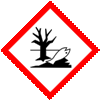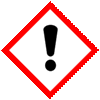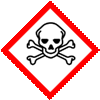| Anmol Chemicals is the pioneer manufacturers of Copper Sulphate, Pharmaceutical Excipients Fragrance & Flavor chemicals in India. We offer Halal and Kosher Copper Sulfate made in an ISO9001, ISO22000 (FSSC22000) cGMP and GLP certified facility. Our group has several manufacturing facilities spread across the world, supported by toll manufacturers and representatives in UAE, Europe, Africa, USA, China and has several associated manufacturing facilities spread across India. All the Information on Physics, Chemistry, Applications, Uses and Technology on Manufacture of Copper Sulphate is in these pages. |
| The units have one or more of the certifications like FDA GMP, ISO 9001, ISO 22000, HACCP, REACH, Kosher & Halal |
MSDS Sheet of Copper Sulfate Anhydrous, Copper Sulphate Manufacturers
Arabic النحاس مصنعين سلفات، اللامائى & بينتاهيدراتي
Italian Solfato di rame pentaidrato n anidro produttori
French Cuivre sulfate anhydres fabricants & pentahydraté
German Kupfer Sulfat Hersteller, wasserfrei & Pentahydrat
Spanish Cobre sulfato fabricantes, anhidras y pentahidratado
Dutch Koper (II) sulfaat fabrikanten, watervrij & pentahydraat
Portuguese Cobre penta-hidratado e fabricantes de sulfato, anidro
Copper sulfate Cupric Sulphate manufacturers
Copper sulfate sulphate anhydrous Manufacturers
Copper sulphate sulphate pentahydrate manufacturers
MSDS of Copper Sulphate Anhydrous Manufacturers
MSDS of Copper Sulphate Pentahydrate Manufacturers
Copper Cupric Sulfate Anhydrous SDS GHS, MSDS Sheet, Material Safety Data Sheet
1. Product Identification
CAS No.:7758-98-7 (anhydrous)
EINECS EC Number: 231-847-6
Molecular Weight: 159.62
Chemical Formula: CuSO4
2. Hazards Identification
GHS, Globally Harmonized System Classification in accordance with 29 CFR 1910
Classification according to Regulation (EC) No 1272/2008
Acute toxicity, oral Category 3
Skin corrosion/irritation Category 2
Serious eye damage/eye irritation Category 2A
Hazardous to the aquatic environment, long-term hazard Category 1
Labeling according Regulation (EC) No 1272/2008
| GHS Label Elements  Aquatic Toxicity |
GHS Label Elements |
GHS Label Elements |
Signal Words: Danger
Hazard statements:
H301 Toxic if swallowed.
H315 Causes skin irritation.
H319 Causes serious eye irritation.
H410 Very toxic to aquatic life with long lasting effects.
Precautionary statements:
P264: Wash … thoroughly after handling.
P270: Do not eat, drink or smoke when using this product.
P273 Avoid release to the environment.
P280: Wear protective gloves/protective clothing/eye protection/face protection.
P330: Rinse mouth.
P301+P310: IF SWALLOWED: Immediately call a POISON CENTER or doctor/physician.
P302+P352: IF ON SKIN: Wash with soap and water.
P305 + P351 + P338 IF IN EYES: Rinse cautiously with water for several minutes. Remove
contact lenses, if present and easy to do. Continue rinsing.
P332+P313: If skin irritation occurs: Get medical advice/attention.
P337+P313: If eye irritation persists get medical advice/attention.
P362: Take off contaminated clothing and wash before reuse.
P391: Collect spillage.
P405: Store in a closed container.
P501 Dispose of contents/ container to an approved waste disposal plant
OSHA Hazards: Target organ effect, toxic by ingestion, Irritant.
HMIS (Perceived): Health hazard: 2, Flammability: 0, Physical hazards: 0
NFPA (Perceived): Health hazard: 2, Fire: 0, Reactivity Hazard: 0.
Classification according to Regulation (EC) No 1272/2008:
Acute toxicity, Oral (Category 4), H302
Skin irritation (Category 2), H315
Eye irritation (Category 2), H319
Acute aquatic toxicity (Category 1), H400
Chronic aquatic toxicity (Category 1), H410
For the full text of the H-Statements mentioned in this Section, see Section 16.
Classification according to EU Directives 67/548/EEC or 1999/45/EC:
Xn Harmful R22
Xi Irritant R36/38
N Dangerous for the environment
R50/53
For the full text of the R-phrases mentioned in this Section, see Section 16.
3. Composition/Information on Ingredients
Ingredient: Copper Sulfate
CAS No.: 7758-98-7 (anhydrous)
Percent: 97 - 100%
4. First Aid Measures
Always seek medical attention after first aid measures are provided.
Inhalation: Remove to fresh air. If not breathing, give artificial respiration. If breathing is difficult, give oxygen. Get medical attention.
Ingestion: Contact a poison control center or physician for treatment advice. Never give anything by mouth to an unconscious person. Get medical attention.
Skin Contact: Wipe off excess material from skin then immediately flush skin with plenty of water for at least 15 minutes. Remove contaminated clothing and shoes. Get medical attention. Wash clothing before reuse. Thoroughly clean shoes before reuse.
Eye Contact: Immediately flush eyes with plenty of water for at least 15 minutes, lifting lower and upper eyelids occasionally. Get medical attention immediately.
5. Fire Fighting Measures
Flammability of the Product: Non-flammable.
Auto-Ignition Temperature: Not applicable.
Flash Points: Not applicable.
Flammable Limits: Not applicable.
Products of Combustion: During a fire, irritating and highly toxic gases may be generated by thermal decomposition or combustion.
Fire: Copper Chloride is not considered to be a fire hazard.
Explosion: Copper Sulfate is Slightly explosive in presence of heat & Metals.
Fire Extinguishing Media: Use any means suitable for extinguishing surrounding fire. Use water spray, alcohol-resistant foam, dry chemical or carbon dioxide.
Special Information: In the event of a fire, wear full protective clothing and NIOSH-approved self-contained breathing apparatus with full face piece operated in the pressure demand or other positive pressure mode. Material is acidic when dissolved in water, contact with magnesium metal may evolve hydrogen gas. Anhydrous cupric sulfate formed on water loss (white color). Anhydrous salt will ignite hydroxylamine, if present.
6. Accidental Release Measures
Small Spill: Avoid dust formation. Avoid breathing dust. Ensure adequate ventilation. Use appropriate tools to put the spilled solid in a convenient waste disposal container. Finish cleaning by spreading water on the contaminated surface and dispose of according to local and regional authority requirements.
Large Spill: Cupric sulfate is a corrosive solid. Avoid touching the spilled material. Do not let the product enter drains. Use a shovel to put the material into a convenient waste disposal container. Do not contaminate the environment.
7. Handling and Storage
Danger! Toxic & Fatal if swallowed. Do not ingest. Do not breathe dust. Wear suitable protective clothing. In case of insufficient ventilation, wear suitable respiratory equipment.
Avoid contact with skin and eyes. Avoid formation of dust and aerosols. Wash hands thoroughly after handling. Provide appropriate exhaust ventilation at places where dust is formed. If you feel unwell, seek medical attention.
Keep Copper Sulphate in a tightly closed container, stored in a cool, dry, ventilated area. Protect against physical damage.
8. Exposure Controls/Personal Protection
Airborne Exposure Limits: Permissible 1 mg/m3 TWA (dust and mist, as Cu, except copper fume) (listed under Copper compounds, n.o.s.).100 mg/m3 IDLH (dust and mist, as Cu) (listed under Copper compounds, n.o.s.). 0.2 mg/m3 TWA (fume).
Ventilation System: A system of local and/or general exhaust is recommended to keep employee exposures as low as possible. Local exhaust ventilation is generally preferred because it can control the emissions of the contaminant at its source, preventing dispersion of it into the general work area.
Personal Respirators (NIOSH Approved): For conditions of use where exposure to dust or mist is apparent and engineering controls are not feasible, a particulate respirator may be worn. For emergencies or instances where the exposure levels are not known, use a full-face positive-pressure, air-supplied respirator.
Skin Protection: Wear protective gloves and clean body-covering clothing.
Eye Protection: Use chemical safety goggles and/or full face shield where dusting or splashing of solutions is possible. Maintain eye wash fountain and quick-drench facilities in work area.
Other Control Measures: Maintain good housekeeping in work area. Dust deposits on floors and other surfaces may pick up moisture and cause the surfaces to become slippery and present safety hazards. Handle in accordance with good industrial hygiene and safety practice. Wash hands after handling.
9. Physical and Chemical Properties
Appearance: Cupric Sulfate is light-grey powder or crystals.
Odor: It is odorless.
Solubility: It is freely soluble in water.
pH: 3.7-4.2 for 10% solution.
Density: 2.28 g/mL at 16C
Molecular Weight: 159.62
Molecular Formula: CuSO4
% Volatiles by volume @ 21C (70F): -
Boiling Point: Not Available
Melting Point: 560°C ---- 200°C is reported in some places.
10. Stability and Reactivity
Stability: Cupric Sulphate is stable under ordinary conditions of use and storage.
Hazardous Decomposition Products: Oxides of sulfur, irritating and toxic fumes and gases, oxides of copper, copper fumes.
Hazardous Polymerization: Will not occur.
Incompatibilities: Metals & alkalies. Avoid hydroxylamine, magnesium, hydrazine, nitromethane.
Conditions to Avoid: Incompatibles and moisture. Avoid Heat, Moisture & incompatibles
11. Toxicological Information
Acute toxicity
Acute toxicity is largely due to the corrosive (acidic) properties of this material. Harmful or fatal if swallowed. Product is an eye and skin irritant, and may cause burns. Product is a respiratory tract irritant, and inhalation may cause nose irritation, sore throat, coughing, and chest tightness and possibly, ulceration and perforation of the nasal septum. Chronic overexposure to this product may cause liver and kidney damage, anemia and other blood cell abnormalities.
Toxicity data
ORL-RAT LD50 ----- 300mg kg-1
ORL-MOUSE LD50 - 369 mg kg-1
Carcinogenic Effects: Not known to be a carcinogen.
Mutagenic Effects: Mutagenic for mammalian somatic cells. May cause damage to the following organs: kidneys, liver.
Teratogenic Effects: Not available.
Developmental Toxicity: Not available.
12. Ecological Information
Environmental Fate: When released into the soil, this material is not expected to biodegrade. When released into the soil, this material may leach into groundwater. When released into water, this material is not expected to biodegrade. When released into water, this material is not expected to evaporate significantly. This material is expected to significantly bioaccumulate.
Environmental Toxicity: Toxicity data for copper. This material is expected to be very toxic to aquatic life. The LC50/96-hour values for fish are less than 1 mg/l. The IC50/72-hour values for algae are less than 1 mg/l.
Toxicity to daphnia and other aquatic invertebrates: EC50 - Daphnia magna (Water flea) - 0.024 mg/l - 48 h
48 Hr EC50 water flea: 0.024 mg/L
96 Hr LC50 rainbow trout: 0.1 mg/L;
48 Hr LC50 bluegill: 0.6 mg/L;
96 Hr LC50 goldfish: 0.1 mg/L
BOD5 and COD: Not available.
13. Disposal Considerations
This product is a registered pesticide. Pesticide wastes are acutely hazardous. Improper disposal of excess pesticides, spray mixtures, or rinsate is a violation of Law. Whatever cannot be saved for recovery or recycling should be managed in an appropriate and approved waste disposal facility. Processing, use or contamination of this product may change the waste management options. State and local disposal regulations may differ from federal disposal regulations. Dispose of container and unused contents in accordance with federal, state and local requirements.
14. Transport Information
US DOT Classification:
UN-Number: UN 3077
Shipping Name: Cupric Sulfate
CLASS 9
Packing group: III
Canada TDG Classification:
UN-Number: UN 9109
Shipping Name: Cupric Sulfate
CLASS 9.2
Packing group: II
IATA
UN-Number: UN 3077
Shipping Name: Cupric Sulfate, Environmentally Hazardous Substance, solid, n.o.s.
CLASS 9 (Miscellaneous Dangerous Goods)
Packing group: III
Identification: 8(Corrosive)
ADR/RID:
UN-Number: UN 3077
Shipping Name: Cupric Sulfate, Environmentally Hazardous Substance, solid, n.o.s.
CLASS 9 (Miscellaneous Dangerous Goods)
Packing group: III
Identification: 8(Corrosive)
Marine Pollutant: This material is considered a marine pollutant by the IMO.
15. Regulatory Information
USA:
OSHA Hazards: Hazardous
TSCA: CAS# 7758-99-8 is not on the TSCA Inventory because it is a hydrate. It is considered to be listed if the CAS number for the anhydrous form is on the inventory (40CFR720.3(u)(2)).
SARA 302 Components: No chemicals in this material are subject to the reporting requirements of SARA Title III, Section 302.
SARA Codes: CAS # 7758-99-8: immediate, delayed. CAS # 7758-98-7: immediate..
SARA 313 Components: This material contains Cupric sulfate pentahydrate (Copper compounds), (CAS# 7758-99-8) which is subject to the reporting requirements of Section 313 of SARA Title III and 40 CFR Part 373.
SARA 311/312 Hazards: Immediate Health Hazard, Chronic Health Hazard.
Health & Safety Reporting List: None of the chemicals are on the Health & Safety Reporting List.
Chemical Test Rules: None of the chemicals in this product are under a Chemical Test Rule.
Section 12b: None of the chemicals are listed under TSCA Section 12b.
TSCA Significant New Use Rule: None of the chemicals in this material have a SNUR under TSCA.
CERCLA Hazardous Substances and corresponding RQs: CAS# 7758-98-7: 10 lb final RQ; 4.54 kg final RQ
Massachusetts Right To Know Components: Listed
Pennsylvania Right To Know Components: Listed
New Jersey Right To Know Components: Listed
California Prop. 65 Components: This product does not contain any chemicals known to State of California to cause cancer, birth defects, or any other reproductive harm.
Clean Air Act:
This material does not contain any hazardous air pollutants.
This material does not contain any Class 1 Ozone depletors.
This material does not contain any Class 2 Ozone depletors.
Clean Water Act: Copper Sulfate Pentahydrate is listed as a Priority and Toxic Pollutant under the Clean Water Act.
WGK (Water Danger/Protection): CAS# 7758-99-8: 2, CAS# 7758-98-7: 2
Canada - DSL/NDSL: CAS# 7758-98-7 is listed on Canada's DSL List.
Canada - WHMIS: CLASS D-1B, D2B.
Canadian Ingredient Disclosure List: CAS# 7758-99-8 (listed as Copper compounds, n.o.s.) is listed on the Canadian Ingredient Disclosure List.
16. Other Information
EINECS EC Number: 231-847-6
Full text of H-Statements:
H302 Harmful if swallowed.
H315 Causes skin irritation.
H319 Causes serious eye irritation.
H400 Very toxic to aquatic life.
H410 Very toxic to aquatic life with long lasting effects.
Full text of R-phrases:
N Dangerous for the environment
Xn Harmful
R22 Harmful if swallowed.
R36/38 Irritating to eyes and skin.
R50/53 Very toxic to aquatic organisms, may cause long-term adverse effects in the aquatic environment.
Safety Phrases: S 22 Do not breathe dust. S 60 This material and its container must be disposed of as hazardous waste. S 61 Avoid release to the environment.
Disclaimer:
***********************************
Our company provides this Cupric Sulfate Anhydrous SDS sheet in good faith but makes no representation as to its comprehensiveness or accuracy. This
Copper Sulphate Anhydrous MSDS sheet is intended only as a guide to the appropriate precautionary handling of the material by a properly trained person using this
product. The above information has been compiled from various sources and has the possibility of discrepancy and being out-dated information. Individuals receiving
the information must exercise their independent judgment and do further search in determining its appropriateness for a particular purpose. In no case shall our
company be liable to loss or damages by the product user.
***********************************
Copper Sulfate Sulphate Anhydrous Manufacturers:
Anmol Chemicals
S-8, SARIFA MANSION, 2ND FLANK ROAD, CHINCHBUNDER, MUMBAI 400009, INDIA
TEL: (OFFICE) 91-22-23770100, 23726950, 23774610, 23723564. FAX: 91-22-23728264
e-mail: anmolc@mtnl.net.in

Aluminum chloride -- Aluminium chloride -- Ammonium persulfate -- Ammonium bromide -- Ammonium sulfate -- Ammonium phosphate monobasic dibasic -- Barium chloride -- Borax Calcium phosphate -- Calcium propionate -- Copper sulfate sulphate -- Sodium Borate -- Calcium saccharate -- Ceric ammonium nitrate -- Cupric chloride -- Calcium Hydroxide -- Citric acid -- Isatoic anhydride -- Magnesium sulfate -- Maleic acid -- Manganese Sulfate -- Methylene blue -- Potassium phosphate monobasic dibasic tribasic -- Sodium formaldehyde bisulfite -- Sodium bromide -- Sodium diacetate -- Sodium Bicarbonate -- Sodium hydroxide pellets, Potassium hydroxide pellets -- Sodium Phosphate monobasic dibasic tribasic --
Exports to USA, Canada, UAE, Dubai, South Africa, Tanzania, Kenya, Nigeria, Egypt, Uganda, Turkey, Mexico, Brazil, Chile, Argentina, Europe Netherlands, Italy, Spain, Germany, Portugal, France, Malaysia, Indonesia, Thailand, Korea, Japan, etc.
Copyright and Usual Disclaimer is Applicable. 11 May, 2021







